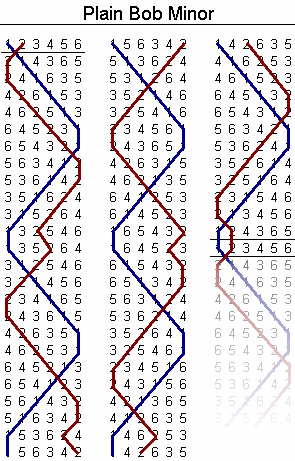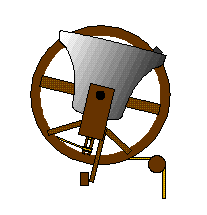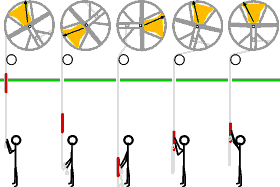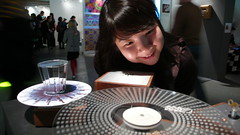MonoScape Research
A summary of our notes and research…
Nick’s presentation notes
Monome
- Handmade – limited edition – locally sourced – walnut – husband-and-wife team in New York.
- No markings – minimal design does nothing until plugged into acomputer. USB umbilical cord.
- Matrix of buttons and lights – completely general purpose, “soft“ interface – can do anything you want – DJ, video control, sequencing, algorithmic music, … Entire ecosystem, open-source community.
- We’ve programmed up a visualisation: 3D rendering in realtime, a feed of the output of our customised software system.
- Also: tilt sensor (accelerometer) – another element of control – snake application etc.
Surround
- Eight bell sounds – but so far, playing back in mono, as if from one speaker. More realistic if we could place them in 3D space. With 3DAS we can do that live, in realtime, controlled from the monome.
- Eight channels (channel strip), each one controlled with an XY pad plus a Z slider for height. Position all in one corner; move all to a different corner, move all to distinct corners.
- Tilt sensors: can also use tilt to position each source in XY.
- No markings – minimal design does nothing until plugged into acomputer – USB umbilical cord.
- Matrix of buttons and lights – completely general purpose – “soft“ interface – can do anything you want – DJ, video control, sequencing, algorithmic music. Entire ecosystem, open-source community.
- We’ve programmed up a visualisation: 3D rendering in realtime – a feed of the output of our customised software system.
- Also: tilt sensor (accelerometer) – another element of control – snake application etc.
Change Ringing
Edited version of entry in Wikipedia, the free encyclopedia: http://en.wikipedia.org/wiki/Change_ringing
Change ringing is the art of ringing a set of tuned bells in a series of mathematical patterns called “changes“. It differs from many other forms of campanology in that no attempt is made to produce a conventional melody.
It developed in the 17th century in English church towers where it remains most popular though it is now found all over the world. A ring of bells contains a few large bells rigged to swing freely. The considerable inertias involved in bells that can weigh over two tons means that each requires its own ringer and a set of such bells is comparatively unwieldy – hence the emergence of permutations rather than melody as an organizing principle.
The simplest way to use a set of bells is ringing rounds – sounding the bells repeatedly in sequence from treble to tenor: 1, 2, 3, etc. – then varying the bells’ order, moving through a series of specific permutations – for example 12345678, 21345678 – which includes each bell rung once and only once.
Since a ringer is responsible for one bell and it’d be impossible to learn all the possible permutations a system called method ringing has developed – which consists mainly of memorizing how a single bell changes position from change to change – when it advances towards the beginning (“goes down to the front“) or when it retreats towards the end (“goes up to the back“). Often ringers study a blueline, a graphical representation of a bell’s course from row to row according to a particular method. Perhaps not surprisingly many bell ringers start with call change ringing where the changes are called through a set of spoken commands.
For some, the ultimate goal of this system is to ring all the bells in every possible permutation without repeating them — called an “extent“ (or sometimes, formerly, a “full peal“). The feasibility of this depends on how many bells are involved – since the permutations increase factorialy – for six bells its 720, eight bells its 40,320 and for 12, 479,001,600. Ringing a full peal on 6 bells would take about 45 mins – 8 bells ~20 hours and 12 bells over thirty years!
Mathematical abstraction though each change may be, some changes do have a musical or melodic meaning to the listener. Over the years, a number of these have acquired names — these are the named changes.
Named Changes
Major (eight bell) changes by bell order:
12563478 – Hagdyke
12753468 – Whittingtons
13245768 – Bowbells
13254768 – Priory/The Intermediate
13527468 – Princesses
13572468 – Queens
14327658 – Roller Coaster
15263748 – Tittums
16745238 – Jacks
17652438 – St. Michael’s
17654328 – Jokers
31247568 – Burdette
35271468 – Barringtons
43562178 – Exploding Hagdyke
45362718 – Exploding Tittums
43215678 – See-Saw
5713468 [no 2nd] – The Archers
75312468 – Kings
75321468 – Princes
76543218 – Roll-Ups/Back Round
Images & animations

The “Blue Line“ of Plain Bob Minor, shown in red. Note that, for clarity, the row at the bottom of each column is repeated at the top of the next.


Animated gifs that show the mechanics of a hung bell and the practise of group ringing.
Links
The Bells Applet: Change Ringing on the Web
http://www.cs.ubc.ca/~kvdoel/bells/bells.html
The Central Council of Church Bell Ringers
http://www.cccbr.org.uk/ringing/ringing.php
Michael Anthony Williams – Call Change Collection
maw.me.uk
Images and animations
http://www.freewebs.com/mybellringing/thebasics.htm
A useful glossary of Bell Ringing Basics
